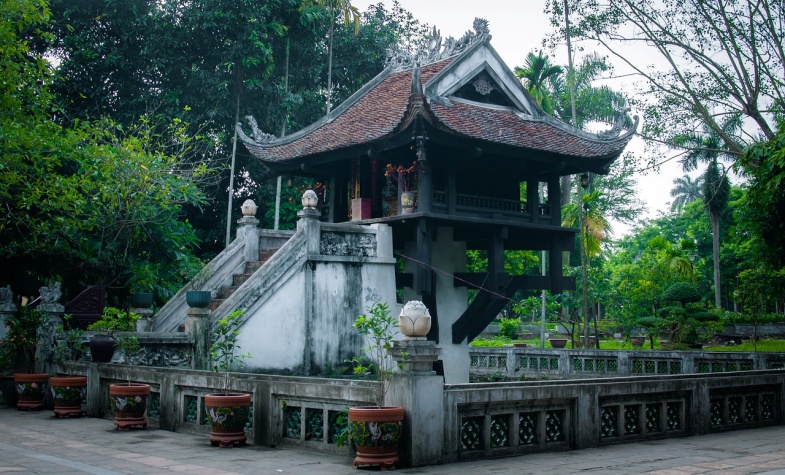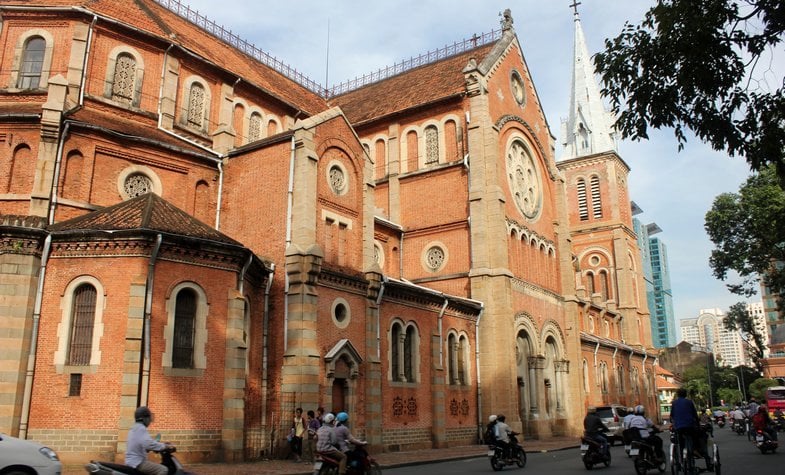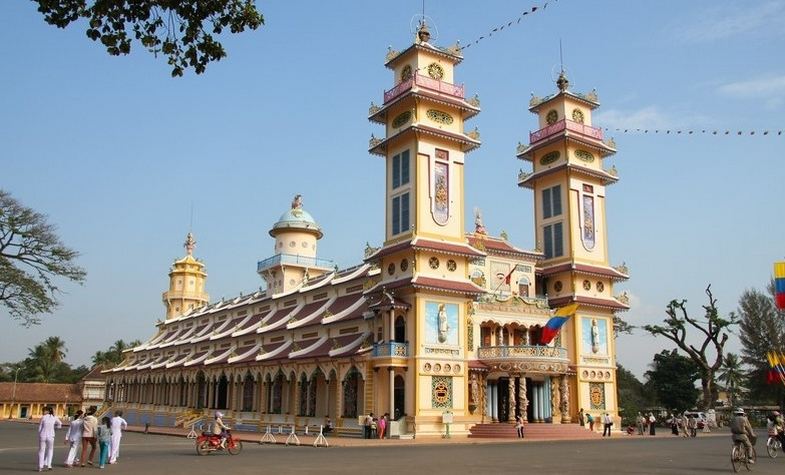Vietnamese religion and belief
Vietnam is not only a land of breathtaking landscapes but also a spiritual mosaic where ancient beliefs and diverse religions harmoniously blend. Discover how religion shapes Vietnam’s culture, festivals, and daily life and don’t miss the chance to witness this living spirituality that few travelers truly experience.
A Land of Many Faiths – How Diverse Is Religion in Vietnam?
Vietnam is a land where faith flows through everyday life, blending traditional beliefs with global religions in remarkable harmony. Around 13–15% of the population officially follow a religion, yet spiritual practices and folk rituals are deeply rooted across the country. From the sound of temple bells to festivals honoring ancestors and deities, belief shapes Vietnam’s cultural identity. Here, religion is not just observed but celebrated and felt in every community and every moment of life.

What makes Vietnam truly special is its natural harmony between religion and folk belief. A Buddhist family may pray to Buddha and their ancestors on the same altar, showing deep respect for both. Temples become spaces where spirituality and joy meet, and ancient rituals blend effortlessly with modern life. This flexible, heartfelt way of worship reflects the Vietnamese spirit of gratitude, harmony, and connection to the spiritual world.
Meet the Six Major Religions That Shape Vietnamese Spiritual Life
Buddhism (Phật giáo)
Buddhism is the most widespread religion in Vietnam, with around 12 million followers. Its influence can be seen everywhere — from the tranquil pagodas nestled on misty mountains to the gentle way Vietnamese people view life through compassion and balance. Buddhist philosophy shapes daily values, art, and major festivals such as Vesak or the Lunar New Year. Visiting ancient temples like Tran Quoc or One Pillar Pagoda offers not only beauty and serenity but also a glimpse into Vietnam’s spiritual heart.
Catholicism (Đạo Công giáo)
Introduced in the 16th century, Catholicism now counts over 7 million followers in Vietnam. The faith left a remarkable mark on the country’s culture and architecture, especially with stunning French-style churches like Notre-Dame Cathedral in Ho Chi Minh City and Phat Diem Cathedral in Ninh Binh. During Christmas and Saint’s Day celebrations, the warm lights, music, and communal spirit fill the streets, drawing both believers and travelers into Vietnam’s festive atmosphere.

Protestantism (Đạo Tin Lành)
Protestantism began spreading strongly in the early 20th century, especially among ethnic groups in the Central Highlands. The religion emphasizes community, music, and heartfelt prayer, creating gatherings filled with unity and faith. Protestant churches in Vietnam are often simple yet vibrant, focusing on spiritual connection rather than ceremony. You can sense the sincerity and warmth of this growing Christian community, which continues to thrive across regions.
Cao Dai (Đạo Cao Đài)
Founded in 1926 in Tay Ninh, Cao Dai is a uniquely Vietnamese religion that blends Buddhism, Confucianism, Taoism, and Catholicism. Its teachings promote love, peace, and universal harmony. The Cao Dai Holy See in Tay Ninh is a magnificent symbol of this fusion, with colorful architecture and spiritual rituals that captivate all who visit. It’s one of Vietnam’s most fascinating religious sites — a vivid expression of unity among beliefs.
Hoa Hao Buddhism (Phật giáo Hòa Hảo)
Originating in the Mekong Delta’s An Giang Province, Hoa Hao Buddhism emphasizes moral living, modesty, and home-based worship. Followers practice simplicity in both faith and lifestyle, focusing on doing good deeds and helping others. Without elaborate temples or ceremonies, this religion highlights the beauty of inner peace and community spirit, reflecting the humble and compassionate soul of Vietnam’s southern people.
Islam (Đạo Hồi)
Islam in Vietnam is closely tied to the Cham ethnic community, mainly in Ninh Thuan, Binh Thuan, and An Giang provinces. The elegant mosques, with their domes and crescent symbols, add a touch of Middle Eastern charm to Vietnam’s landscape. Islamic followers observe prayers and traditional festivals with deep devotion, offering you a chance to discover a lesser-known but deeply rooted spiritual world within Vietnam’s cultural mosaic.
Discover Vietnam’s Most Iconic Religious Destinations
Northern Vietnam is home to some of the country’s most sacred and scenic religious landmarks. The Yen Tu Pagoda Complex in Quang Ninh is considered the cradle of Truc Lam Zen Buddhism, where pilgrims climb misty mountains seeking peace and enlightenment. Just outside Hanoi, the Perfume Pagoda attracts thousands each spring with its boat rides and spiritual journeys through limestone caves. In Ninh Binh, the Phat Diem Cathedral amazes visitors with its rare blend of Eastern pagoda roofs and Gothic church design — a true masterpiece of harmony.

Central Vietnam offers a captivating mix of faith, history, and breathtaking beauty. The Linh Ung Pagoda in Da Nang stands tall with the country’s highest Lady Buddha statue, gazing serenely over the sea. The My Son Sanctuary in Quang Nam reveals the ancient spiritual heart of the Cham civilization and Hindu culture. Meanwhile, La Vang Holy Land in Quang Tri is a deeply revered Catholic site, where pilgrims gather to seek blessings and peace amid its tranquil gardens.
Southern Vietnam showcases a colorful tapestry of spiritual diversity. The Cao Dai Holy See in Tay Ninh mesmerizes visitors with its vivid colors and unique blend of multiple faiths. In Tien Giang, Vinh Trang Pagoda impresses with its elegant mix of Asian and European architectural styles. Further south, the mosques in Chau Doc, An Giang, offer a fascinating glimpse into Cham Islamic culture, where faith and tradition create a serene and distinctive spiritual atmosphere.
Ultimate Guide to Visiting Temples and Spiritual Sites in Vietnam
-
Dress Respectfully: Wear modest clothing when visiting temples, pagodas, or churches. Cover your shoulders and knees, and remove hats or shoes before entering worship areas.
-
Mind Your Manners: Speak softly, avoid pointing or touching sacred statues, and always show respect to monks, priests, and worshippers. A gentle bow or clasped hands is appreciated.
-
Timing Your Visit: Early morning is ideal for a peaceful experience, while festivals or full-moon days offer vibrant cultural insight. Check the local calendar for major religious events.
-
Photography Etiquette: Ask permission before taking photos, especially inside temples or during ceremonies. Some sacred areas may prohibit photography.
-
Offerings and Prayers: If you wish to make offerings, use fresh flowers, fruits, or incense. Follow the locals’ lead and place them respectfully on the altar.
-
Learn the Story Behind Each Site: Each pagoda, church, or mosque has its own legend and symbolism. Hiring a local guide or reading about it in advance makes your visit more meaningful.
-
Stay Mindful and Open-Hearted: Visiting Vietnam’s spiritual sites is not just sightseeing — it’s a cultural journey. Take time to reflect, listen, and feel the calm energy that defines the country’s soul.
Exploring Vietnam’s religions and beliefs is more than a cultural journey, it’s a window into the soul of the nation. Each temple bell, prayer chant, and offering reflects centuries of faith and harmony. Don’t just read about it — come and feel the sacred heartbeat of Vietnam for yourself.
Our tours you may like:
***
Travel Authentic Asia Company is your best choice for discovering the beauty of Southeast Asia. Our experienced and knowledgeable travel advisors are committed to helping you create a tailor-made tour and extraordinary experiences in this majestic region.
If you're looking for an authentic cultural experience, do not hesitate to contact Travel Authentic Asia to choose a Vietnam tour, Southeast Asia tour package or to customize your own style tour to South East Asia.

